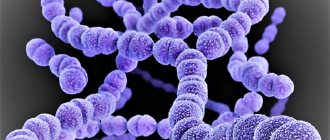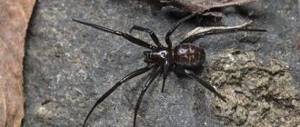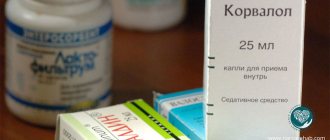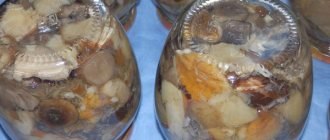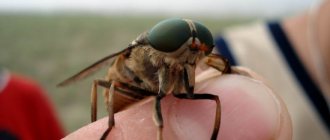Home > Bee venom
Bee venom is a substance produced by certain special glands located in the abdominal cavity of the bee. It is a clear aqueous liquid with a pungent, bitter taste and aromatic odor (comparable to the aroma of ripe bananas), a distinctly acidic substance.
It is easily soluble in water and acids, almost insoluble in alcohol. Contains 30% solid material. The poison dries quickly at room temperature. Transforms into a sticky substance without loss of virulence. It is very heat resistant, it can withstand temperatures of 100°C for ten days without loss of power. Pure bee venom has a powerful anti-inflammatory effect, therefore it is often used as part of targeted medications, as well as in apitherapy treatment.
Since time immemorial, bee venom (apitoxin) has been used to treat various diseases. If bee venom is used correctly as prescribed by a doctor, it effectively treats many diseases. But the use of bee venom requires caution, taking into account all indications and contraindications.
Treatment with bee venom is called apitoxin therapy.
Composition of bee venom
The chemical composition of bee venom is complex. Externally, it is an odorous, transparent, slightly viscous liquid with a pungent and bitter taste. Apitoxin is resistant to external factors: high and low temperatures, acids and alkalis. In the human body it is destroyed by the influence of digestive juices. Dries quickly while retaining all its properties.
Dried bee venom
Most of the components in bee venom have an active effect on the body. This is what bee venom consists of: enzymes, low molecular weight protein particles, neurotransmitters, macro- and microelements and some other components. The action of all components is interconnected, their therapeutic effects organically complement each other.
Composition of bee venom
The composition of bee venom is mainly the proteins adolapin and melitin, which have a powerful anti-inflammatory effect. For comparison, the popular hydrocortisone is a hundred times less effective and at the same time has a number of side effects that bee venom does not have. Melittin, the most abundant substance, is one of the most effective anti-inflammatory agents (100 times more powerful than hydrocortisol). Adolapine is another strong anti-inflammatory substance and inhibits cyclooxygenases, it has analgesic activity. Apamin blocks calcium-dependent potassium channels, thereby enhancing the transmission of nerve impulses. Other substances, such as hyaluronidase, phospholipase A2, histamine and degranulating protein, are involved in suppressing the inflammatory response, softening the tissue and facilitating the flow of other substances. That is why bee venom is widely used to treat diseases of the immune and nervous systems, as well as diseases of infectious and viral origin.
Enzyme composition of apitoxin
Enzymes are complex proteins with high molecular weight that accelerate redox reactions involved in metabolism. Bee venom contains:
Enzyme Hyaluronidase
Hyaluronidase - breaks down hyaluronic acid, which is an integral part of the intercellular substance of connective tissue; this reduces the viscosity of the fabric and increases its permeability to any means, including bee toxins. Relieves swelling, smoothes scars on the skin, adhesions in internal organs, restores range of motion in joints, prevents the development of contractures (persistent movement disorders). Causes sensitization (allergization) of the body.
Phospholipase A2
Phospholipase A2 - destroys phospholipids included in the walls of cell membranes, which leads to their destruction. Red blood cells are primarily affected, and blood hemolysis occurs. With the correct dosage, it prevents the formation of blood clots, but has a pronounced toxic effect on the body.- Phospholipase B partially neutralizes the toxic effect of phospholipase A2.
- Acid phosphatase is an enzyme that causes additional sensitization.
Protein composition of bee venom
The protein composition of apitoxin is divided into zero, first and second fractions:
- The zero fraction contains biologically inactive proteins, their composition has not yet been fully studied; has no effect on the body;
- The first fraction contains 13 amino acids and active peptides:
melittin
peptide melittin is the main active ingredient of apitoxin; when it enters the blood, it instantly dilates blood vessels, destroys red blood cells (hemolysis), prevents the formation of blood clots, causes tissue irritation, an inflammatory reaction and activation of the immune system; melittin stimulates nervous activity;- MSD-peptide (peptide-401) – potentiates some properties of melittin (increased vascular permeability, effects on the nervous system), has a powerful anesthetic and anti-inflammatory effect.
- adolapine – a peptide with anesthetic and anti-inflammatory properties;
- Cardiopeptide - supports the function of the circulatory system.
apamin is a peptide that potentiates (strengthens) the effect of melittin on the nervous system; increases blood pressure (BP); due to stimulation of cortisol production, it has an anti-inflammatory effect; does not sensitize the body;
- The second fraction contains 18 amino acids and has a moderate effect on the body. But it contains enzymes that cause hemolysis (phospholipase A2) and increase the permeability of blood vessels (hyaluronidase).
What else does bee venom contain?
The composition of bee venom is varied. In addition to enzymes and peptides, it includes:
neurotransmitters
neurotransmitters are substances that transmit nerve impulses along nerve cells (neurons):- histamine – causes allergic reactions, instantly dilates blood vessels, increases their permeability, causes allergic swelling of tissues, reduces blood pressure;
acetylcholine – dilates blood vessels, transmits nerve impulses from neurons to muscle cells; helps restore motor function after a stroke;
Common Natural Toxins
These types of poisons do not always lead to tragedies, but this does not make them any less dangerous or toxic. Some sources of such toxins grow right under human feet, while other varieties are produced by animals, insects and fruit trees.
It is thanks to these “natural gifts” that almost every person knows that it is better not to put some berries in the mouth. If poisoning occurs, then, in most cases, the victim is pumped out and treated; Deaths are relatively rare, but they do happen.
Toadstools, fly agarics and false honey mushrooms
Mushrooms contain a lot of different microelements and substances; Some of them (like those listed above) remain very harmful and dangerous for humans during heat treatment. It is enough to eat 30 grams of toadstool to occupy the toilet for a long time. Characteristic symptoms also include a decrease in pulse, the appearance of severe thirst and frequent loss of consciousness.
Poisonous mushrooms, if not treated promptly, lead to death, especially if a person already suffers from serious illnesses such as hepatitis. Some types of fly agaric can cause hallucinations; however, this occurs only after severe intoxication of the body.
Black widow (karakurt)
The CIS region is definitely lucky in terms of the absence on its territory of many poisonous snakes, insects and spiders, the bites of which can easily kill a person. Karakurt is a spider, 10-20 mm in size, whose venom contains natural neurotoxins.
When bitten by such a spider, a person experiences burning and severe pain in the chest and abdomen, after which the heartbeat increases. After 15 minutes, vomiting and headache may occur, leading to blackouts and delirium.
If a special serum is not administered to the patient, the likelihood of death or irreparable harm to health increases. An example of such a serum is novocaine, as well as sodium hydrogen sulfate.
Wolf's bast (wolfberry)
Eating beautiful-looking berries can lead to severe intestinal damage. As a rule, children suffer from such poisoning, who can pick the fruits of the wolfberry simply out of curiosity.
The clinical picture of poisoning is similar to mushroom poisoning: abdominal pain, nausea, severe diarrhea and weakness of the body. The difference is that the use of wolfberry, as a rule, is not widespread; Children usually ingest no more than one or two berries, so the mortality rate is much lower than with mushrooms.
For first aid, all the actions that are taken in the case of food poisoning must be carried out, that is, taking sorbents, gastric lavage, diet and bed rest.
The effect of bee venom on the human body
The effect of bee venom on the human body is multifaceted. Therefore, if prescribed by a doctor in the correct dosage, bee venom can be used to treat many diseases. But it is important to remember that this is a toxin and should be used with caution.
.
How does bee venom work:
- under the influence of toxin enzymes, blood vessels dilate, which facilitates the rapid penetration of toxins into tissues; blood pressure decreases;
- sensitization of the body occurs;
important: an allergic reaction may occur during a repeated procedure;
- the effect of bee venom on human blood: red blood cells are destroyed, blood hemolysis occurs;
- bee venom thins the blood, preventing increased thrombus formation; in case of overdose bleeding is possible;
All the properties of bee toxins are preserved in such finished products as Zdorov cream-wax or, for example, Apisatron ointment.
Experts and patients note the effectiveness, ease of use and lack of side effects of a popular product on the Russian market - cream wax from the Zdorov company.
Botulinum toxin
Many poisons can be lethal in small doses, so it is quite difficult to single out the most dangerous one. However, many experts agree that botulinum toxin, which is used in Botox injections to smooth out wrinkles, is the strongest
.
Botulism is a serious disease that causes paralysis
, caused by botulinum toxin, which is produced by the bacterium
Clostridium botulinum
. This poison causes damage to the nervous system, respiratory arrest and death in terrible agony.
Symptoms may include nausea, vomiting, double vision, facial weakness, speech impediments, difficulty swallowing
and others. The bacterium can enter the body through food (usually poorly canned foods) and through open wounds.
Benefits of bee venom for humans
Bee therapy has been used in medicine for a long time. Benefits of bee venom for humans :
- elimination of inflammation, pain;
- resorption of scars and adhesions;
- improvement of local blood circulation and metabolism, restoration of altered tissues;
- antiseptic, anti-inflammatory and rejuvenating effects on the skin;
- restoration of cartilage tissue in metabolic-dystrophic lesions of the joints and spine (arthrosis and osteochondrosis);
- prevention of thrombus formation and related complications - myocardial infarction, strokes, thrombophlebitis, thromboembolism (thromb separation with subsequent blockage of large main vessels);
- activation of the immune system, increased appetite, normalization of the sleep-wake process;
- restoration of motor impairments after a stroke.
The use of bee venom is recommended for:
- neuralgic pain associated with pinched or inflamed nerves;
- metabolic-dystrophic diseases of the joints and spine - to eliminate pain, improve blood circulation and restore cartilage tissue;
- rheumatic lesions - to eliminate inflammation and pain;
- muscle pain caused by various diseases and injuries, as well as tendon strains;
- treatment of varicose veins and hemorrhoids - bee venom helps relieve inflammation, pain, prevents the formation of blood clots, tones the walls of the veins;
- treatment of prostatitis;
- in cosmetology, bee venom is used: as part of mesotherapy for skin rejuvenation, elimination of scars - injections of bee venom;
- in the composition of creams for rejuvenation and problem skin - cream with bee venom and propolis for problem skin from the company Zdorov and others.
Bee venom has not only beneficial properties, but also contraindications. These include:
- increased sensitivity of the body to apitoxin components;
- oncological diseases and fast-growing benign tumors;
- any acute diseases and exacerbations of chronic diseases;
- severe diseases of internal organs with impairment of their functions;
- anemia - bee toxins destroy red blood cells;
- Stably high blood pressure – the release of a large amount of the hormones cortisol and adrenaline into the blood can contribute to an increase in blood pressure;
- periods of pregnancy and lactation, childhood;
- mental disorders.
Mercury and mercury poisoning
Inhalation of mercury vapor (the metal quickly turns into a gas at room temperature) affects the lungs and brain
, turning off the central nervous system.
Inorganic mercury, which is used to make batteries, can be fatal if ingested and cause kidney damage and other symptoms. Organic mercury found in fish and seafood is usually hazardous over long-term exposure. Symptoms of poisoning may include memory loss, blindness, seizures and others.
Tetrodotoxin
This deadly poison is found in the organs of puffer fish.
, from which the famous Japanese delicacy “fugu” is prepared. Tetrodotoxin persists in the skin, liver, intestines and other organs, even after the fish has been cooked.
This toxin causes paralysis, seizures, mental disorder
and other symptoms. Death occurs within 6 hours after ingestion of the poison.
Every year, several people are known to die painful deaths from tetrodotoxin poisoning after eating fugu.
Potassium cyanide
Potassium cyanide is one of the fastest killing poisons
known to mankind.
It may be in the form of crystals and a colorless gas with a "bitter almond" odor
. Cyanide can be found in some foods and plants. It is found in cigarettes and is used to make plastic, photographs, extract gold from ore, and kill unwanted insects.
Cyanide has been used since ancient times, and in the modern world it has been a method of capital punishment. Poisoning can occur through inhalation, ingestion, and even touching, causing symptoms such as seizures, respiratory failure, and in severe cases, death.
, which may occur in a few minutes. It kills by binding to iron in blood cells, making them unable to carry oxygen.




